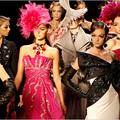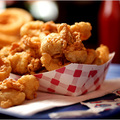PEOPLE ask me, more often than any other question by far, where to go to learn about wine.
Usually I tell them to go home.
No kidding. The best place to learn about wine is at home, particularly if you stop off at a good wine shop on the way.
What I’m about to propose is a do-it-yourself method that has a lot to offer to just about anybody who loves wine, or wants to learn about it. In fact, if you’ll join in with me, we will take this home wine class together and be the better for it. Let me explain.
Wine classes are best if you already know a little something and have decided that you are enthusiastic enough to pursue a passion. But for beginners they can be daunting, and they tend to teach more about how to describe wines rather than helping you learn what you like.
Books can be inspiring and entertaining, and at some point they are essential. But they pose similar problems for beginners. Do you think you can learn to play golf by reading a book? Of course not. You have to get out there and struggle, for years most likely.
Learning about wine is far more pleasant. All you have to do — almost — is drink it.
My approach does require a little thought and a modest bit of work, though, because you will learn only if you pursue wine systematically.
First, identify a good wine shop near you. If the answer isn’t obvious, ask a wine-obsessed friend for some recommendations. Second, find somebody at the shop with whom you seem to have a rapport and who is passionate about wine. Certain clues will help you gauge the passion. For example, if a salesperson tries to entice you by quoting scores from a consumer magazine, forget it. But if the salesperson explains why he or she loves a particular wine, it’s a very good sign.
Now you are ready to get down to business. Ask the salesperson for a mixed case — six red, six white — and give the shop a spending limit. You don’t need to be extravagant, but it’s not a time to stint, either. I suggest $250, give or take $50.
If the shop is a good one, you will be taking home a guide to the diverse and wonderful forms wine takes around the world. Some you will love, others you may detest. Either way, tasting a range is essential to learning about wine and about your own tastes.
Now comes the fun. Every night, or however often seems right, open one of the bottles with dinner. This is important. You want to drink a wine with food for the full experience.
Just the other night in a Spanish restaurant, I tasted a Rueda, a white wine made from the verdejo grape. On its own it was unexpectedly tart and pungent. With a bite of my shrimp-and-fig tapa, it was softer and more harmonious.
Over time you will gain a pretty good idea of which wines correspond with which foods. A really good wine shop may even have suggested general food pairings with the wines.
You will have to take some notes. Write down the name of the wine, the vintage, what you ate with it, and what you liked or didn’t like about it. It’s even easier than it sounds, especially if you don’t try to use the florid language of wine writers.
As you inhale the aromas and taste the flavors, think in general terms — was it sweet? Bitter? Did the aromas remind you of fruit, or maybe something else? Perhaps it didn’t taste like fruit at all, but like a beautiful sunset. Don’t know that I’ve had a sunset, but it’s evocative, at least.
The most important thing, though, is not how you describe the wine but whether you liked it or not, and whether you felt it enhanced what you ate or clashed with it. When you finish the case, return to the wine shop. Go over your list with the salesperson and, based on what you liked best, ask the shop to put together a second case of different bottles.
With this method you will gain a sense of what wines you like best. Eventually, if it’s fun, you may be motivated to find out even more.
That’s the time to buy a book or take a class, because now you have a context for organizing, understanding and digesting a blizzard of information. You may not be driving the ball 300 yards, or picking out Pomerols from Pommards, but you know what? Very few people do.
Now, as I said, I think this method is great not just for beginners but for anybody who wants to learn more about wine. So I’ve gone out and placed an order for a mixed case of wine on a $250 budget. In fact, I placed not just one order but two, from different shops, to see how the selection of the mixed case might differ and what that might mean.
For my first order, I called Lyle Fass at Chambers Street Wines in TriBeCa, an excellent, idiosyncratic shop that specializes in wines of the Loire, Burgundy and Piedmont. I know Lyle, and we share similar tastes for offbeat wines, so I asked him to please put together a case for me as he would for anybody else trying to learn about wine. It turns out that he gets a lot of requests like this.
“All the time,” he said. “It’s the funnest thing in the world.”
Out of curiosity, I also placed an order with a different sort of place, Sherry-Lehmann, the ultimate establishment wine shop. I spoke on the phone with Joy Land, a salesperson whom I didn’t know, but she knew exactly what I was after, and she quickly described her own palate.
“My background and my love is French wine,” Ms. Land said. “I like wines that are very elegant. I don’t like wines that are very big. I don’t like purple wines, or wines that stain your teeth.”
I’ll go along with that, though I do admit I kind of like purple.
I’ve now received both cases and they are similar conceptually, though they differ completely in the particulars. Both contain a Bordeaux, a red Burgundy and a white Burgundy. Both include a riesling and a zinfandel. Both include a sauvignon blanc, a Côtes du Rhône and a red from Italy. Both Lyle and Joy decided that one of the whites needed to be a Champagne.
I’ve got my work cut out for me, and I hope you’ll join me. I plan to keep you abreast of my progress on my blog, The Pour.
If you are newsprint-bound, check back here over the next couple of months and I’ll let you know what I’ve learned.
Homework
Your assignment: buy the following wines and drink them. Take notes. The lists were compiled by Lyle Fass of Chambers Street Wines in TriBeCa and Joy Land of Sherry-Lehmann.
LYLE'S CASE
Camille Savès Brut
Carte Blanche NV $36.99
Schäfer-Fröhlich
Nahe Halbtrocken 2005 $16.99
Picq Chablis Vieilles Vignes
2005 $19.99
Boulay Sancerre Chavignol
2005 $22.99
Pépière Muscadet sur Lie
2005 $9.99
Huet Vouvray Clos du Bourg
Demi-Sec 2002 $36.99
Maréchal Bourgogne Rouge
Cuvée Gravel 2005 $24.99
Paloumey Haut-Médoc
2004 $21.99
Sobon Estate Fiddletown
Lubenko Vineyard 2005 $19.99
Texier Côtes du Rhône
Brézème 2004 $15.99
Moris Morellino diScansano
2004 $15.99
Baudry Chinon Les Granges
2005 $14.99
JOY'S CASE
Deutz Brut NV $27.95
Selbach-Oster Zeltinger
Schlossberg Spätlese 2002 $22.95
Domaine Guy Roulot
Bourgogne Blanc
2004 $21.95
Villa Maria Private Bin
Marlborough Sauvignon Blanc
2006 $12.95
Salomon-Undhof Kremstal
Hochterrassen Grüner Veltliner
2005 $9.95
Tablas Creek Paso Robles
Esprit de Beaucastel Blanc
2004 $29.95
Mommessin Gevrey-Chambertin
2003 $34.95
Croix de Beaucaillou Saint-Julien
2003 $31.95
Ridge Sonoma County
Three Valleys
2005 $19.95
Guigal Côtes du Rhône
2003 $10.95
Allegrini Palazzo della Torre IGT
2003 $16.95
Enrique Foster Mendoza Malbec
Ique 2004 $8.95






